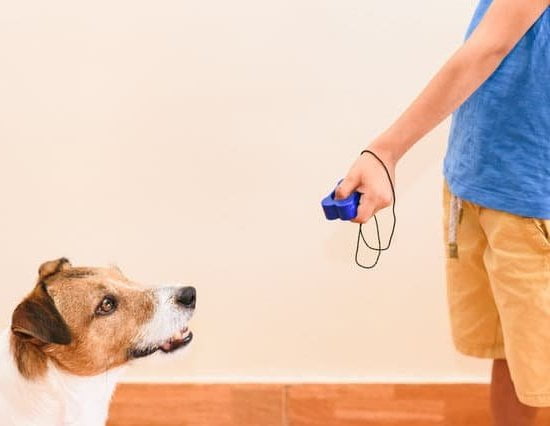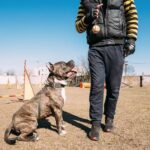Deer hunting with dogs has been a traditional and effective method for hunters to track, flush, and retrieve game. Training a dog for deer hunting requires patience, dedication, and specific techniques to ensure success in the field. In this article, we will explore how to train a dog for deer hunting, from choosing the right breed to advanced tracking and retrieval methods.
Using dogs in deer hunting comes with numerous benefits. They can cover more ground than a human hunter alone, have a keen sense of smell for tracking, and provide companionship during long hours in the wilderness. With the proper training, a well-equipped hunting dog can greatly enhance the hunting experience and increase the chances of a successful hunt.
One of the crucial steps in training a dog for deer hunting is selecting the appropriate breed. Each breed has its own strengths and characteristics that make them suitable for different aspects of hunting. Basic obedience training lays the foundation for your dog to obey commands while out in the field. Additionally, introducing scent training early on will hone your dog’s ability to track down elusive game efficiently.
The Benefits of Using Dogs in Deer Hunting
Using dogs in deer hunting can provide various benefits to hunters, making the overall experience more efficient and enjoyable. One of the key advantages of utilizing dogs in deer hunting is their exceptional sense of smell. Dogs have a strong olfactory system that allows them to track scents over long distances, making them invaluable in locating wounded or elusive deer. Additionally, their keen hearing and sight can help alert hunters to the presence of deer in the vicinity.
Another benefit of using dogs in deer hunting is their ability to cover ground quickly and efficiently. Dogs can navigate rough terrain with ease, allowing them to flush out deer from dense brush or wooded areas. Their agility and speed make them effective partners in pursuing and cornering prey, increasing the chances of a successful hunt.
Furthermore, hunting with dogs can enhance the overall camaraderie between hunters and their furry companions. The bond developed through training, working together in the field, and celebrating successful hunts can strengthen the relationship between a hunter and their dog. This mutual trust and teamwork create a rewarding partnership that goes beyond just hunting for game.
To maximize these benefits and ensure a successful hunt, it is essential to properly train your dog for deer hunting. Basic obedience training lays the foundation for more advanced techniques like tracking and retrieving. Scent training is particularly crucial as it harnesses a dog’s natural abilities to follow trails effectively. By investing time and effort into training your dog correctly, you can enjoy a fulfilling experience while out in the field pursuing deer.
Choosing the Right Breed for Deer Hunting
When it comes to training a dog for deer hunting, one of the most crucial decisions you will make is choosing the right breed for the job. Not all dogs are suited for deer hunting, so it’s important to select a breed that has the necessary skills and characteristics for tracking and retrieving game successfully. Some popular breeds that excel in deer hunting include Labrador Retrievers, German Shorthaired Pointers, and Bluetick Coonhounds.
Characteristics to Look For
When selecting a breed for deer hunting, there are certain characteristics to consider. Look for dogs with a strong prey drive, good stamina, excellent scenting abilities, and an eagerness to work. Breeds that have been traditionally bred for hunting purposes are often the best choice, as they have instincts that are well-suited for this type of activity. Additionally, consider the climate and terrain in which you will be hunting, as some breeds may perform better in certain environments.
Training Considerations
Different breeds may require different training approaches when it comes to preparing them for deer hunting. While some breeds may naturally excel in tracking and retrieving game, others may need more guidance and structured training sessions. Regardless of the breed you choose, consistency and positive reinforcement are key when training a dog for deer hunting.
Start with basic obedience commands before moving on to more advanced skills such as scent training and tracking. Consider working with a professional trainer who specializes in hunting dog training to ensure your dog is properly prepared for the field.
Basic Obedience Training for Hunting Dogs
Training a dog for deer hunting requires a strong foundation in basic obedience. Before moving on to more advanced techniques, it is crucial to ensure that your dog can follow basic commands such as sit, stay, come, and heel. These commands are not only essential for effective hunting but also serve as the building blocks for more complex training exercises. Consistency is key when teaching these commands, and positive reinforcement through treats or praise can help reinforce the desired behaviors.
One important aspect of basic obedience training for hunting dogs is leash training. A well-trained dog should be comfortable walking on a leash without pulling or lunging. This skill is particularly vital during deer hunting, as it allows the hunter to maintain control over their dog in various hunting environments. Regular practice sessions while walking on a leash can help your dog become accustomed to following your lead and responding to your cues effectively.
Another crucial element of basic obedience training for hunting dogs is socialization. Exposing your dog to different people, animals, and environments from a young age can help prevent fear or aggression issues down the line. Socialization also teaches your dog proper behavior around distractions, which is essential when out in the field during deer hunting season. By ensuring that your dog is well-socialized, you can build a strong foundation for successful deer hunting adventures together.
| Aspect of Training | Importance |
|---|---|
| Basic Commands | Building blocks for advanced training |
| Leash Training | Control and discipline during hunts |
| Socialization | Prevention of fear or aggression issues |
Introduction to Scent Training for Deer Hunting
The Importance of Scent Training
Scent training is a crucial aspect of preparing a dog for deer hunting. A dog’s sense of smell is one of its most powerful tools in the field, and proper training can enhance their ability to track and locate deer.
By teaching your dog to follow specific scents related to deer, you are maximizing their potential for success during hunting trips. This specialized training allows dogs to distinguish between different scents in the environment and focus on tracking down deer with precision.
Getting Started With Scent Training
To begin scent training for deer hunting, it is essential to start with basic obedience commands. This foundation will set the groundwork for more advanced scent work later on. Introduce your dog to specific deer-related scents gradually, allowing them to become familiar with the smells associated with the hunt.
Start by using items like deer antlers or shed antler scent and reward your dog for showing interest in these scents. As they become more comfortable with these smells, you can progress to introducing stronger scents like mock deer blood trails or other training aids specifically designed for scent work.
Advanced Scent Training Techniques
As your dog becomes proficient in recognizing and following deer-related scents, you can move on to more advanced training techniques. Consider setting up simulated hunting scenarios where your dog has to track a trail or locate hidden targets based on scent cues alone. These exercises will enhance their tracking skills and teach them how to navigate complex scent trails effectively.
Additionally, incorporating challenges like changing up wind directions or introducing distractions during training sessions will help prepare your dog for real-life hunting situations where conditions may not be optimal. By consistently practicing and refining these skills, you will be equipping your dog with the necessary tools to excel in deer hunting expeditions.
Advanced Training Techniques for Tracking and Retrieving Deer
Training a dog for deer hunting requires advanced techniques for tracking and retrieving game. These skills are crucial for a successful hunt and can make all the difference in bringing down a deer ethically. Here are some advanced training techniques to help your hunting dog excel in the field:
- Field experience: One of the best ways to train your dog for tracking and retrieving deer is to give them plenty of field experience. Take them out into the woods regularly and let them practice their skills in a variety of terrains and conditions. This hands-on experience will help them build confidence and sharpen their instincts.
- Scent discrimination: Training your dog to discriminate between different scents is essential for deer hunting. Teach them to differentiate between the fresh scent of a deer and other distractions in the environment. Use scent trails and scent-discriminating exercises to hone this skill.
- Simulated hunts: To prepare your dog for actual hunting scenarios, consider setting up simulated hunts where they have to track, chase, and retrieve mock game. This will help them practice their skills in a controlled environment before facing the real challenges of a live hunt.
Advanced training techniques for tracking and retrieving deer require patience, dedication, and consistency. By investing time and effort into your dog’s training, you can enhance their natural abilities as hunters and improve their performance in the field. Remember that every dog is different, so tailor your training methods to suit your dog’s individual strengths and weaknesses.
By implementing these advanced training techniques, you can equip your hunting dog with the skills they need to excel in tracking and retrieving deer during hunts. With patience, practice, and perseverance, you can build a strong bond with your canine companion while enjoying a successful hunting season together.
Safety Tips for Hunting With Dogs
When it comes to hunting with dogs, safety should always be a top priority. Whether you are a seasoned hunter or just starting out, ensuring the well-being of your canine companion is essential. Here are some important safety tips to keep in mind while training your dog for deer hunting:
First and foremost, make sure your dog is properly trained and obedient before taking them out on a hunting trip. This includes basic commands such as sit, stay, come, and heel. A well-trained dog is not only safer in the field but also more effective in helping you track down deer.
Another crucial aspect of hunting with dogs is to ensure they are equipped with the right gear. This includes proper identification tags with your contact information, as well as a brightly colored vest to make them visible to other hunters. Additionally, consider investing in protective booties to shield their paws from rough terrain or sharp objects.
It’s also important to be mindful of your surroundings and potential hazards while out in the field. Keep an eye out for poisonous plants, bodies of water, or other wildlife that could pose a danger to your furry companion. Always have a first aid kit handy for both you and your dog in case of any emergencies.
| Safety Tip | Description |
|---|---|
| Proper Training | Ensure your dog is well-trained and obedient before hunting. |
| Protective Gear | Equip your dog with identification tags, bright vests, and protective booties. |
| Awareness of Surroundings | Be vigilant of potential dangers such as poisonous plants or wildlife. |
Hunting Gear and Equipment for Dogs
When it comes to training a dog for deer hunting, having the right gear and equipment is essential to ensuring a successful hunt. One of the most important pieces of gear for a hunting dog is a quality tracking collar.
This collar allows hunters to easily keep track of their dogs in thick brush or dense forests, especially when they are on the scent of a deer. GPS tracking collars are particularly useful as they provide real-time location updates, making it easier to follow the dog’s movements during the hunt.
Another essential piece of equipment for hunting dogs is a durable and comfortable harness. A good quality harness not only helps to distribute weight evenly across the dog’s body, but also allows the hunter to have better control over their canine companion, especially during challenging terrain or when navigating through obstacles in the wilderness. Additionally, having a well-fitted harness can prevent injuries and discomfort for the hunting dog during long hours in the field.
In addition to collars and harnesses, other gear that can aid in training a dog for deer hunting includes specialized training leads, protective vests for safety during hunts, as well as first aid kits designed specifically for dogs. All these tools are essential in ensuring that both the hunter and their four-legged partner are prepared and equipped for a successful deer hunting expedition.
By investing in proper gear and equipment tailored to hunting dogs, one can maximize their chances of a fruitful hunt while keeping their loyal companion safe and comfortable throughout the process.
Conclusion
In conclusion, training a dog for deer hunting is not only about honing their skills in tracking and retrieving, but it is also about building a strong bond between the hunter and their canine companion. The journey of preparing a dog for such a specialized task requires dedication, patience, and understanding from both parties involved.
It is essential to remember that the relationship between a hunter and their hunting dog goes beyond just the hunt itself; it is about trust, teamwork, and mutual respect.
The key to successfully training a dog for deer hunting lies in consistency, positive reinforcement, and clear communication. Basic obedience training sets the foundation for more advanced techniques like scent training, tracking, and retrieving. By investing time and effort into proper training methods, hunters can ensure that their dogs are well-prepared for the challenges of the hunt while also strengthening the bond they share.
Ultimately, the bond between a hunter and their hunting dog is truly special. It is built on countless hours spent together in the field, facing obstacles, and celebrating victories.
The loyalty, companionship, and unwavering support that a well-trained hunting dog provides are invaluable. As hunters embark on their deer hunting adventures with their four-legged companions by their side, they are not just partners in the chase but lifelong friends united by a common passion for the thrill of the hunt.
Frequently Asked Questions
How Do I Train My Dog to Hunt Deer?
Training a dog to hunt deer requires patience, consistency, and the right approach. Start by introducing your dog to the scent of deer and gradually exposing them to tracking exercises in a controlled environment. Positive reinforcement is key to reinforcing good behavior and rewarding progress.
Can You Train a Hunting Dog Yourself?
Yes, it is possible to train a hunting dog yourself with dedication and knowledge. Research various training techniques, understand your dog’s breed characteristics, and establish a strong bond through consistent training sessions. Seeking guidance from experienced hunters or professional trainers can also be beneficial.
When Should I Start Training My Dog to Track Deer?
The ideal time to start training your dog to track deer is during puppyhood, as early as 8-12 weeks old. Begin with basic obedience training to establish a foundation of discipline before progressing to scent-tracking exercises. Consistency in training and starting early can lead to better results in developing your dog’s tracking skills over time.

Welcome to the blog! I am a professional dog trainer and have been working with dogs for many years. In this blog, I will be discussing various topics related to dog training, including tips, tricks, and advice. I hope you find this information helpful and informative. Thanks for reading!





